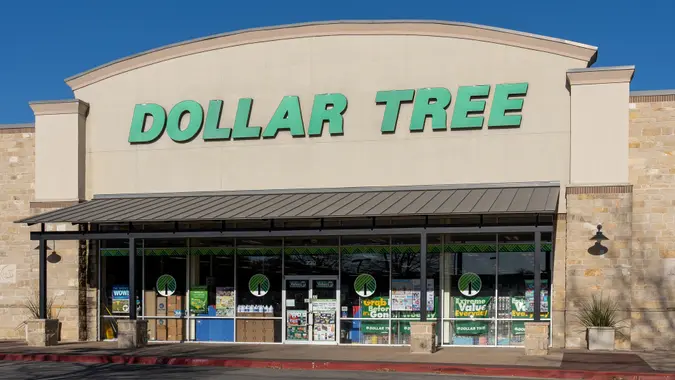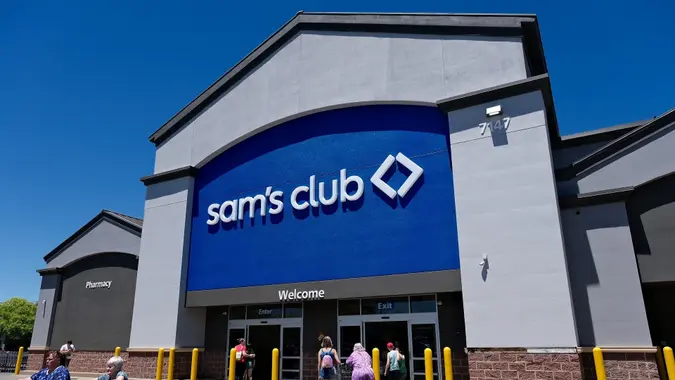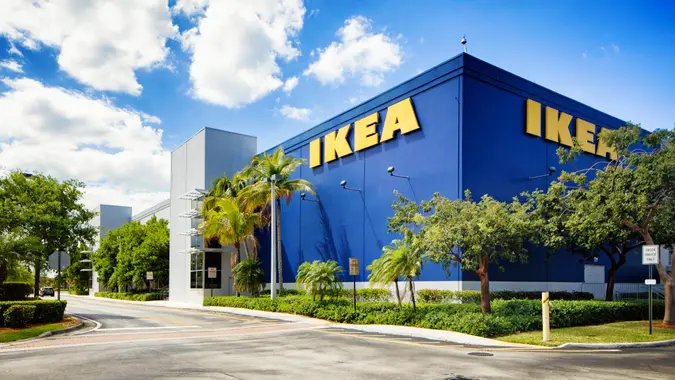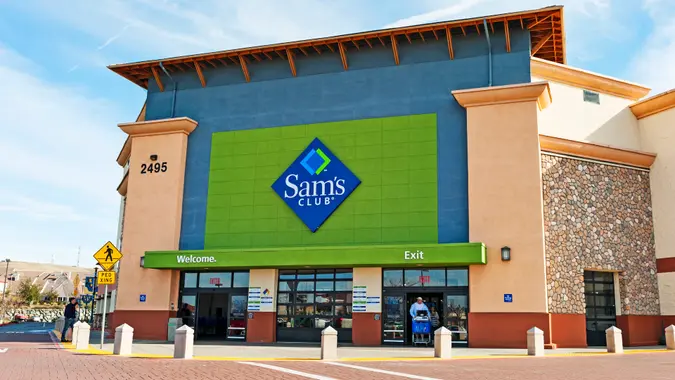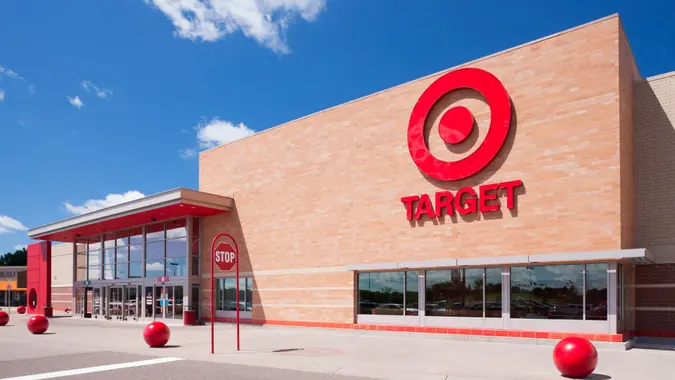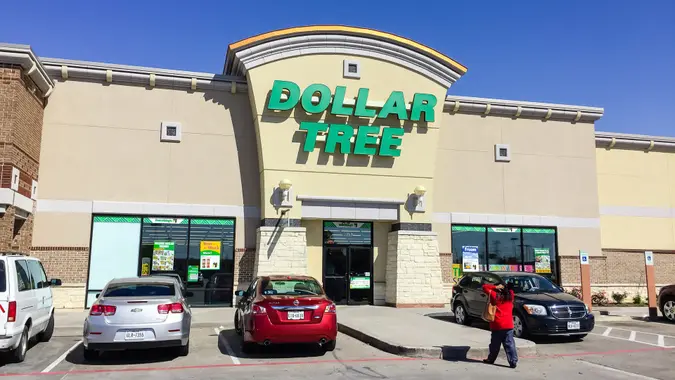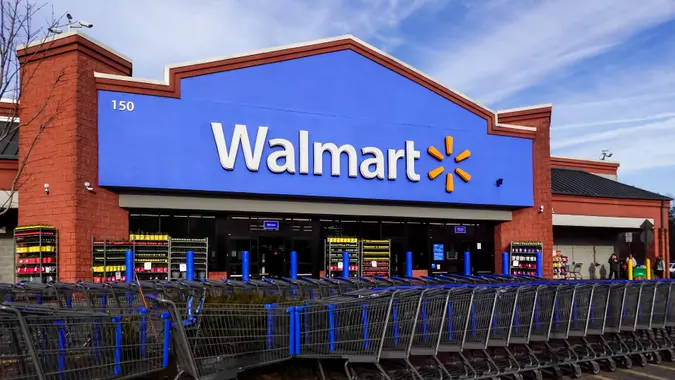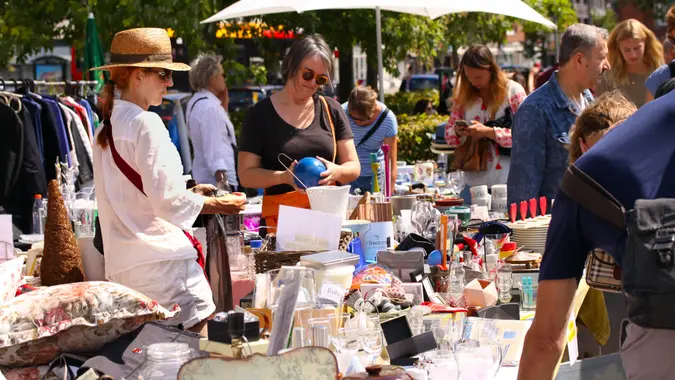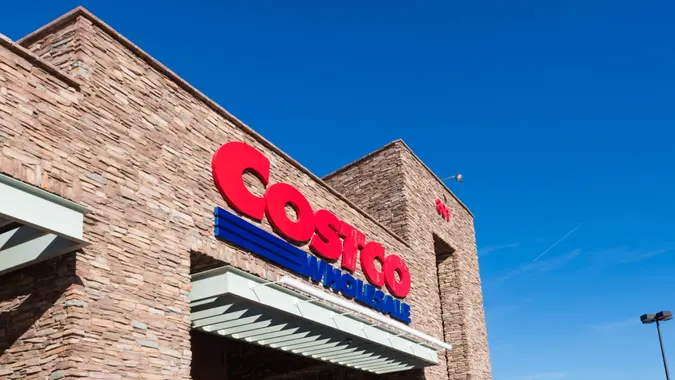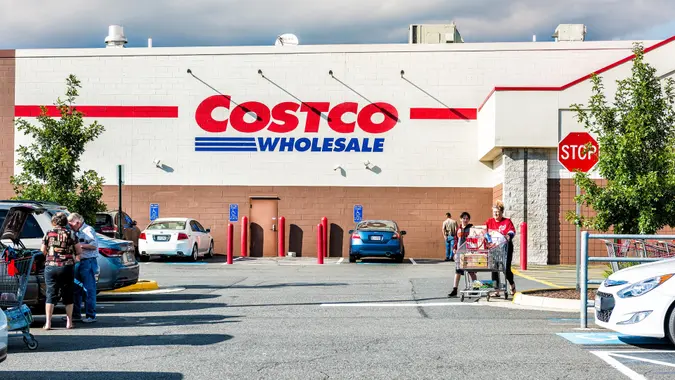Despite Reopenings, Online Shopping Is Growing — And More Spending Trends in 2021

Commitment to Our Readers
GOBankingRates' editorial team is committed to bringing you unbiased reviews and information. We use data-driven methodologies to evaluate financial products and services - our reviews and ratings are not influenced by advertisers. You can read more about our editorial guidelines and our products and services review methodology.

20 Years
Helping You Live Richer

Reviewed
by Experts

Trusted by
Millions of Readers
Now that 2021 is coming to a close, it’s time to look back and reflect on the shopping and spending trends that shaped it. The COVID-19 pandemic wreaked havoc on the economy last year, but things are looking up.
See: 6 Holidays Purchases That You Should Only Make at CostcoCheck Out: 4 Costco Items That Have Remained Cheap for Years
Much of this is likely due to the unemployment rate, which was 4.6% as of October 2021 — just shy of the pre-pandemic 4.4% in March 2020. Personal consumption expenditures are also on the rise, totaling $116.26 billion in the third quarter of 2021, compared with $111.51 during the same time period in 2020 and $110.14 in 2019, according to the Bureau of Economic Analysis.
Here’s a look at the biggest shopping and spending trends of 2021.
Year in Review: Take a Look Back at the Top Money Topics and Happenings of 2021
Online Shopping Is More Popular Than Ever
In an effort to reduce their risk of COVID-19 exposure, many consumers shifted much of their shopping online. Even now that vaccines are plentiful for Americans ages 5 and over, this trend shows no sign of slowing.
Non-store and online sales are expected to increase 18%-23% to a range of $1.09-$1.13 trillion in 2021 — excluding automobile dealers, gasoline stations and restaurants — according to the National Retail Foundation.
More than half — 57% — of consumers are shopping online at a higher volume than before the pandemic, according to Feedvisor’s 2021 Amazon Consumer Behavior Report. Additionally, 72% of survey respondents now have an Amazon Prime membership.
Breaking it down even further, 47% of people have shopped weekly or daily in a physical store location during the last 12 months, according to data from the December 2021 PwC Global Consumer Insights Pulse Survey. Slightly less, but notably close, 41% shopped online via a mobile phone or smartphone compared to 39% in June 2021 and 33% in March 2021.
Some People Are Ready To Splurge
As things slowly returned to a new normal this year, people were ready to open their wallets and leave the economic uncertainty of 2020 behind. In June, Bank of America CEO Brian Moynihan told CNBC’s Becky Quick on “Squawk Box” that customers’ credit and debit cards over the Zelle payment network saw a 20% increase for the year so far, compared to the same time period in 2019.
Therefore, it isn’t surprising that nearly 70% of people planned to spend more than usual in at least one category — i.e., 35% on travel and vacations and 28% at restaurants — depending on the COVID-19 situation, according to a March 2021 survey conducted for The New York Times by Survey Monkey.
However, people were more inclined to treat themselves earlier in the year than later. In February, 51% of people planned to splurge in 2021, compared with just 42% in August, according to data from McKinsey & Company.
At 78%, high-income — earning greater than $100,000 per year — millennials were the most likely to have plans to indulge, followed by 64% of high-income Gen Zers. Overall, baby boomers were the least likely to splurge, with only 17% of low-income — earning less than $50,000 per year — members planning to treat themselves and 22% of middle-income — earning $50,000-$100,000 per year — members, according to August McKinsey & Company data.
Find Out: How Much Does a Costco Membership Really Save You?
Back-to-School Shopping Surged
Due to the pandemic, in September 2020, 67% of parents with children under age 18 reported that classes had moved to a remote format, according to the National Center for Education Statistics. However, by June 2021, a National Retail Federation survey revealed 64% of back-to-school shoppers expected children to return to in-person classes mostly or entirely, increasing the demand for back-to-school shopping.
Families with children in grades K-12 planned to spend $848.90 on back-to-school items in 2021 — $59 more than last year — according to the NRF. In total, back-to-school spending was expected to reach a record-high $37.1 billion, marking a notable increase from $33.9 billion in 2020, according to the NRF.
Spending on Food Services and Accommodations Has Strongly Recovered
Among service categories hit especially hard by the pandemic from February through April 2020, food services and accommodations had the strongest resurgence, according to Deloitte. For example, personal consumption expenditures on food services and accommodations during the second quarter of 2021 was just 3.2% lower than the first quarter of 2019.
In December 2020, just under 40% of people felt safe going to a restaurant or bar, while only roughly 45% felt safe going to a hotel, according to Deloitte. By September 2021, more than 60% felt safe going to a restaurant or bar and nearly the same amount felt safe staying at a hotel.
Impressively, advance monthly sales for food services and drinking places in the U.S. totaled $72.42 billion — seasonally adjusted — in October 2021, according to the U.S. Census Bureau. As for travel, Americans were expected to set a record with 2021 summer vacation spending topping $150 billion — averaging $2,122 per household — according to an August 2021 whitepaper published by Allianz Partners USA.
More From GOBankingRates
 Written by
Written by  Edited by
Edited by 



